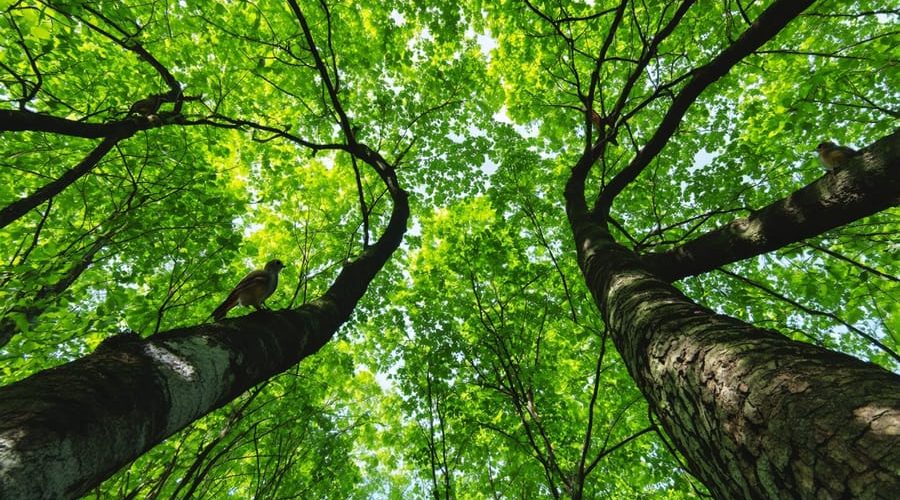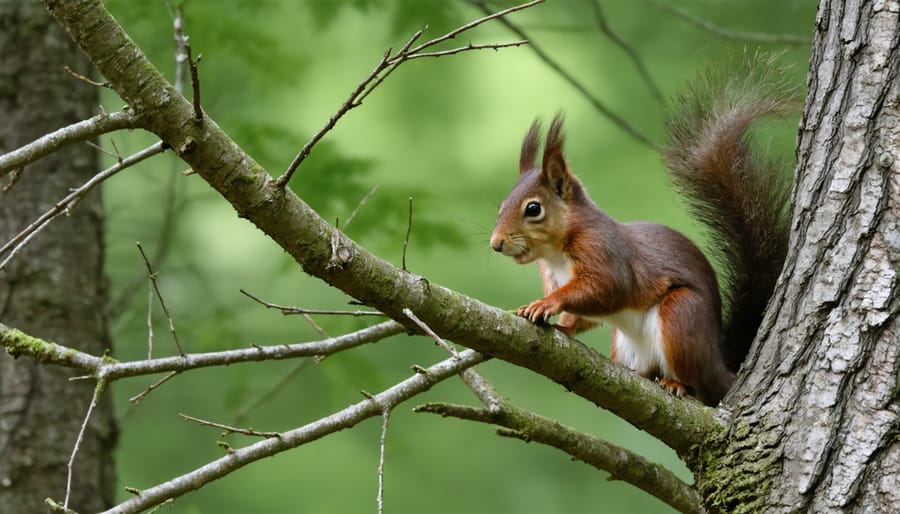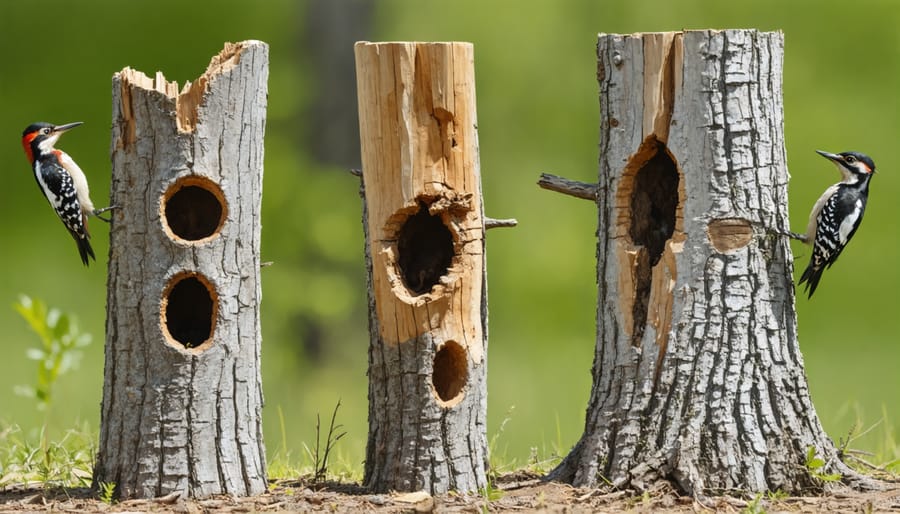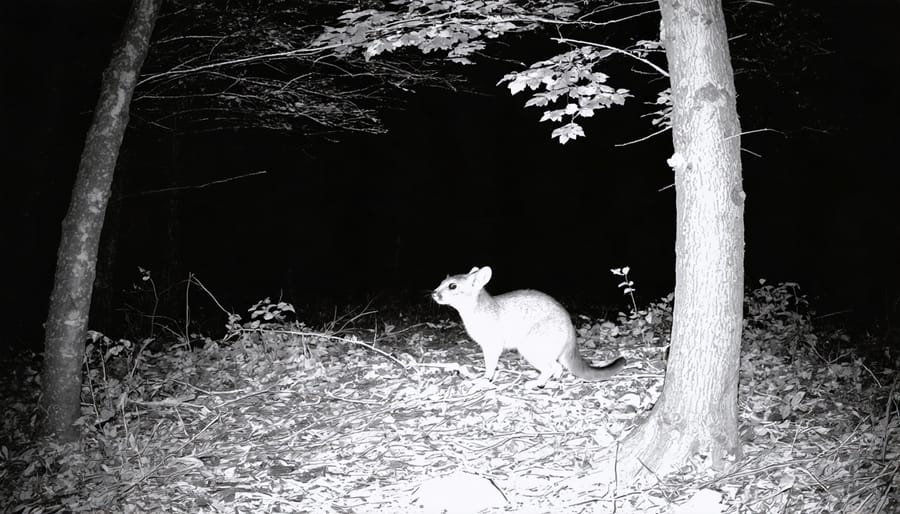
Forest Habitats That Keep Tree-Dwelling Animals Thriving
Forest management transcends traditional timber harvesting, embracing a complex interplay of ecological processes, wildlife conservation, and sustainable resource utilization. Modern forest stewardship requires a delicate balance between human needs and ecosystem health, integrating scientific understanding with practical conservation strategies.
Successful forest management hinges on three fundamental pillars: biodiversity preservation, ecosystem resilience, and sustainable resource utilization. Each management decision ripples through the entire forest ecosystem, affecting everything from soil microorganisms to canopy-dwelling species. This interconnected approach acknowledges that healthy forests are dynamic systems requiring adaptive management strategies that evolve with changing environmental conditions.
The challenges facing today’s forest managers are unprecedented. Climate change, invasive species, and increasing human pressure demand innovative solutions that protect forest health while meeting societal needs. By implementing science-based management practices, monitoring forest health indicators, and maintaining habitat connectivity, managers can foster resilient forest ecosystems that support diverse wildlife populations while providing essential ecosystem services.
This holistic approach to forest management represents a paradigm shift from historical practices, emphasizing long-term ecosystem health over short-term resource extraction. Understanding and working with natural forest processes creates more resilient landscapes capable of adapting to environmental changes while sustaining both wildlife and human communities.
Understanding Arboreal Habitat Needs
Canopy Structure and Connectivity
The spacing and arrangement of trees in a forest create a complex overhead network that’s vital for wildlife movement and forest health. When trees grow close together, their branches interlock to form what we call the canopy – nature’s highway system for many creatures. Think of it as a connected neighborhood where squirrels, birds, and other tree-dwelling animals can travel safely above ground.
Good forest management maintains these natural connections by carefully planning which trees to keep and remove. Ideally, about 70-80% of the tree crowns should overlap, creating continuous pathways through the forest. This overlap not only helps wildlife but also provides shade that keeps the forest floor cool and moist.
When managing your forest, look for gaps in the canopy that might interrupt these natural corridors. Young trees can be encouraged to grow in these spaces, eventually filling in the gaps. Remember that different species need different amounts of space – some trees naturally grow with spreading crowns, while others grow tall and narrow. Working with these natural growth patterns helps create a healthy, connected forest structure that benefits both the trees and the creatures that call them home.

Food Sources and Seasonal Changes
Food availability in forest ecosystems changes dramatically throughout the year, directly impacting wildlife populations and their behavior. During spring and summer, forests offer abundant food sources including fresh leaves, berries, insects, and small mammals. Many species take advantage of this plenty to build up fat reserves and raise their young.
As autumn approaches, nuts and seeds become crucial food sources, with acorns, beechnuts, and pine cones providing essential nutrients for various forest dwellers. Bears, squirrels, and birds actively gather and store these resources for winter survival. Some animals, like deer, switch from tender leaves to woody browse and dried vegetation during colder months.
Winter presents the greatest challenge, with limited food availability forcing animals to rely on stored resources or adapt their diets. Forest managers can support wildlife during these lean periods by maintaining diverse tree species, preserving snags that harbor insects, and ensuring connectivity between different forest patches. Creating and protecting areas with year-round food sources, such as evergreen trees and shrubs that retain their berries through winter, helps sustain wildlife populations throughout the year.
Essential Forest Management Practices
Tree Species Selection
Selecting the right tree species is crucial for successful forest management. Just like native plant selection in other ecosystems, choosing appropriate trees requires careful consideration of local conditions and wildlife needs.
Start by assessing your soil type, climate, and existing forest composition. Native species are often the best choice as they’re naturally adapted to local conditions and support indigenous wildlife. Consider factors like growth rate, mature size, and canopy spread when making your selection.
For timber production, look for species with straight trunks and valuable wood properties. If wildlife habitat is your priority, choose trees that provide food and shelter through nuts, fruits, or dense foliage. Some excellent choices include oak species for their acorns, maple for its dense canopy, and pine for year-round cover.
Mix different species to create diversity and resilience in your forest. This helps protect against diseases and provides varied habitats for wildlife. Include both early-successional species for quick establishment and slower-growing, long-lived species for forest stability.
Remember to consider future climate predictions when selecting trees. Species that thrive today might struggle as conditions change, so include some trees known to adapt well to warmer or drier conditions. Regular monitoring will help you adjust your species selection strategy over time.
Dead Wood Management
Dead wood plays a vital role in forest ecosystems, serving as essential habitat for countless species. Whether standing as snags (dead trees) or lying on the forest floor, dead wood creates diverse microhabitats that support wildlife and enhance biodiversity. By creating microhabitats, these natural structures provide shelter, nesting sites, and feeding grounds for various creatures.
Standing snags offer prime real estate for cavity-nesting birds like woodpeckers, owls, and chickadees. These dead trees also serve as perches for hunting birds and support numerous insects that feed on decomposing wood. As the wood gradually decays, it becomes home to fungi, lichens, and moss, creating complex mini-ecosystems.
Fallen logs are equally important, providing cover for small mammals, amphibians, and reptiles. They act as natural highways for wildlife movement and offer safe spaces for animals to rest, hide from predators, or raise their young. As these logs decompose, they return valuable nutrients to the soil, supporting new plant growth and maintaining forest health.
When managing forests, it’s essential to maintain a healthy balance of dead wood. Aim to preserve both standing snags and fallen logs, ensuring they’re distributed throughout the forest. Remember that different decay stages support different species, so maintaining dead wood in various states of decomposition maximizes habitat value.

Corridor Planning
Wildlife corridors are essential pathways that connect fragmented forest areas, allowing animals to move safely between habitats. Creating and maintaining natural wildlife corridors requires thoughtful planning and ongoing maintenance to ensure their effectiveness.
Start by identifying existing animal movement patterns and natural landscape features that can serve as corridor foundations. Look for natural valleys, streams, or vegetated areas that animals already use. The ideal corridor width varies depending on the target species but generally should be at least 100 feet wide for smaller animals and up to 1,000 feet for larger species.
When planning corridors, incorporate diverse native vegetation that provides food and shelter. Include a mix of trees, shrubs, and ground cover to create multiple layers of habitat. Avoid using invasive species that might spread into surrounding forest areas.
Consider potential barriers like roads or developments, and work with neighboring landowners to create continuous passages. Installing wildlife underpasses or overpasses at road crossings can significantly improve corridor safety and effectiveness.
Regular monitoring and maintenance are crucial. Remove obstacles, manage vegetation growth, and repair any damage promptly. Consider installing wildlife cameras to track corridor usage and adjust your management approach based on observed patterns. Remember that successful corridors often take years to establish, so patience and consistent care are essential.
Monitoring and Adaptation
Population Surveys
Keeping track of animal populations in your forest is easier than you might think, and it’s crucial for understanding the health of your woodland ecosystem. The most common monitoring techniques include track surveys, camera trapping, and direct observation methods.
Track surveys involve walking predetermined routes through your forest and recording animal footprints, droppings, and other signs. It’s best to do these surveys after rain or snow when tracks are most visible. Create a simple grid system in your forest and document what you find using a notebook or smartphone app.
Camera trapping has become increasingly popular and affordable. Place weatherproof trail cameras at strategic locations like game trails, water sources, or feeding areas. These cameras can capture photos or videos when they detect movement, giving you valuable insights into animal behavior and population patterns.
Direct observation requires patience but can be incredibly rewarding. Set up observation points in elevated areas or natural blinds, and conduct counts during dawn or dusk when animals are most active. Remember to maintain consistent timing and routes for all your surveys to ensure reliable data collection over time.
For smaller animals, live trapping and release methods can help establish population estimates. Always check local regulations and obtain necessary permits before implementing any trapping programs. Consider partnering with local wildlife experts or conservation groups for guidance and support in your monitoring efforts.

Habitat Assessment Tools
Forest managers rely on various tools and techniques to effectively measure biodiversity and assess habitat quality. One of the most common methods is the Point-Count Survey, where observers record species presence and behavior at specific locations within the forest. This provides valuable data about which areas are most frequently used by wildlife.
Geographic Information Systems (GIS) mapping helps create detailed visual representations of forest structure, including canopy cover, understory density, and dead wood distribution. These maps are essential for identifying potential wildlife corridors and habitat hotspots.
Camera traps have become increasingly popular for monitoring wildlife activity without disturbing natural behaviors. These motion-activated cameras provide photographic evidence of species presence and their use of different habitat features.
Forest managers also use simple tools like DBH (diameter at breast height) tapes to measure tree sizes, densiometers to assess canopy cover, and plot sampling frames to evaluate ground vegetation. These measurements help determine whether the forest provides adequate shelter, food sources, and nesting sites for target species.
Soil sampling and analysis reveal important information about forest health and nutrient availability, which directly affects habitat quality. Combined with vegetation surveys that document plant species diversity and distribution, these assessments provide a comprehensive picture of habitat suitability for various wildlife species.
Common Challenges and Solutions
Forest management comes with its fair share of challenges, but with the right approach, these obstacles can be overcome effectively. One common issue is dealing with invasive species that can quickly take over and threaten native plant communities. Regular monitoring and early intervention are crucial – removing invasive plants before they establish strong roots can save countless hours of future work.
Disease management presents another significant challenge. Many forests face threats from various pathogens and pests, like bark beetles or fungal infections. Creating buffer zones between affected and healthy areas, along with implementing proper sanitation practices, can help contain these issues. It’s also helpful to maintain diverse tree species, as this naturally reduces the risk of disease spreading throughout the entire forest.
Soil degradation often occurs in heavily managed forests, particularly after logging operations. To address this, consider implementing erosion control measures and leaving sufficient organic matter on the forest floor. Rotating harvest areas and allowing adequate recovery time between harvests helps maintain soil health and forest productivity.
Fire management continues to challenge forest managers, especially with changing climate patterns. While controlled burns can be beneficial for some ecosystems, managing fire risk requires careful planning. Creating firebreaks, maintaining access roads, and developing emergency response plans are essential components of fire management strategy.
Human-wildlife conflicts also need careful attention. As forests become increasingly fragmented by development, managing the interface between human activities and wildlife becomes crucial. Creating wildlife corridors and maintaining buffer zones between developed areas and core forest habitat can help minimize these conflicts.
Funding limitations often restrict management activities, but creative solutions exist. Partnering with conservation organizations, applying for grants, or developing sustainable forest products can help generate necessary resources. Sometimes, volunteer programs can also provide valuable assistance while engaging the community in forest conservation efforts.
Forest management and ecology continue to evolve as we better understand the complex relationships within forest ecosystems. The key takeaways from successful forest management practices emphasize the importance of maintaining biodiversity, implementing sustainable harvesting methods, and protecting critical wildlife habitats. By focusing on these aspects, we can ensure healthier forests that benefit both wildlife and human communities.
Looking ahead, the future of forest management faces both challenges and opportunities. Climate change will require more adaptive management strategies, while new technologies like drone monitoring and AI-powered data analysis will enhance our ability to track forest health and wildlife populations. The growing emphasis on carbon sequestration and ecosystem services also opens new avenues for forest conservation funding and support.
Success in forest management ultimately depends on collaboration between landowners, conservation groups, and government agencies. By sharing knowledge and resources, these stakeholders can work together to implement evidence-based practices that promote forest resilience and biodiversity. The integration of traditional ecological knowledge with modern scientific approaches will also play a crucial role in shaping future management strategies.
As we move forward, maintaining a balance between resource utilization and conservation will remain paramount. With continued research, community engagement, and adaptive management practices, we can ensure our forests remain vibrant ecosystems for generations to come.
